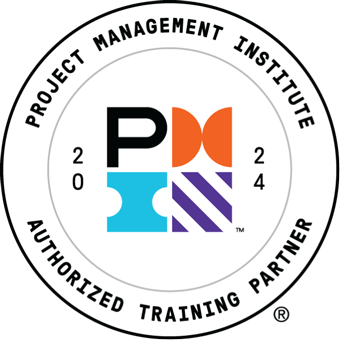Features
Premium video tutorials
Award-winning instructors
Personalized learning
Get certified
Learn at your own pace
Mobile (learn on-the-go)
Unlimited tests and quizzes
Regularly updated content
Overview
Managing project teams and stakeholder expectations requires a transparent process, so nothing is left up to interpretation. In this Project Management for Team Members and Stakeholders course, you’ll master the art of good project communication, eliminating ambiguity from each stage of the project to improve coordination and decision making.
For projects to run smoothly, it takes careful collaboration and alignment, which is why everyone, including stakeholders, team members, and managers, can all benefit from speaking the same project management language.
By the end of this Project Management for Teams and Stakeholders course, you’ll be able to:
- Identify stakeholders and prioritize their project goals.
- Understand project team structures, including team roles and responsibilities.
- Map the connections between team leaders, scrum masters, and other core members.
- Understand the fundamentals of team leadership, including decision-making, negotiation, mentoring, and emotional intelligence.
- Effectively communicate with teams to set goals, conduct efficient meetings, and run reviews and training.
- Perform a stakeholder analysis to understand their needs.
- Design a project team plan with 31 engaging lessons, including real-world examples and actionable exercises.
- Earn 15.5 PDUs or contact hours toward your Project Management education for certification with PMI.
This course is based on The Project Management Institute, A Guide to the Project Management Body of Knowledge (PMBOK® Guide) - Seventh Edition, Project Management Institute, Inc., 2021.
If your goal is to become a Certified Project Management Professional, then we recommend taking our additional courses on Project Management Framework, Project Planning, and Project Performance and Delivery.
Once enrolled, our friendly support team and tutors are here to help with any course-related inquiries.

- 720p
- 540p
- 360p
- 0.50x
- 0.75x
- 1.00x
- 1.25x
- 1.50x
- 1.75x
- 2.00x
Summary
Syllabus
Stakeholder Management Free Lesson
1
Stakeholders
The Project Stakeholders' support is essential for project success. Project Stakeholders set the goals for the project and will ultimately determine whether the project is considered a success or failure.
2
Stakeholder Identification
Identifying stakeholders enables the project team to create a strategy for each that guides the communication and interaction with each stakeholder.
3
Stakeholder's Project Goals
Many stakeholders have additional goals for a project beyond the primary business goal. Understanding those goals can help the team ensure project success and maintain stakeholder support.
4
Stakeholder Influence
Project Teams and Team Leaders Free Lesson
1
Project Leader
The Project Leader is responsible for ensuring the project team executes the project.
2
Core Team
Most large projects are managed by a cross-functional core team. Core team members have a dual responsibility; they are responsible for the project achieving its goals and they are responsible to ensure that the project complies with their function’s standards and best practices.
3
Project Team Leader
Team Leaders adapt to the business and team environment to ensure the team creates the performance or implements the change for which it was chartered.
4
Scrum Master/Product Owner
Agile Scrum projects rely on the leadership of the Scrum Master and Product Owner to assist the project team in accomplishing the project tasks. While neither of these individuals will be the project leader in a classic sense, both take on some of the typical responsibilities of project leadership that are necessary for effective project management.
5
Agile Culture
The Agile culture is a set of characteristics found in all the Agile methodologies. These characteristics are empowerment, adaptation, and a focus on performance.
6
Team Building
Project Team Building is a process that the Project Core Team normally goes through to improve team coordination and decision making.
7
Virtual Teams
It is common in today’s business environment to be a member of or lead a virtual project team. There are several unique challenges with these teams that the project leader must be prepared to address.
8
Changing Team Members
When project team members are changed, the project leader needs to manage both the process of saying “Goodbye” to one individual and saying “Hello” to another.
9
Training Plan
10
Measuring Training Outcomes
In the typical project of today, a project training plan is essential to address the challenges with project resources. At this time in the project, the impact of the training plan that was developed is assessed. In addition, changes to the project team will likely require modifications to the training approach.
Team Leadership
1
Setting Team Goals
Teams perform better when they have clear shared goals. One key element of good team leadership is helping your team establish team goals. This module will provide several suggested approaches for establishing goals and a set of criteria for good team goals.
2
Decision Making
Project Decision Making is the process whereby the project leader and project team decide upon project strategy, tactics, and acceptable actions.
3
Team Negotiation
Team members will often need to negotiate with each other on tasks and activities and the team leader may need to negotiate with the other managers or supervisors of team members.
4
Conflict Resolution
From time to time teams will experience conflict. When the team leader or team members are able to resolve the conflict in a positive manner, the team becomes stronger and performs better.
5
Diversity and Inclusion
6
Mentoring Teams and Stakeholders
Projects are unique and project team members are frequently changing. Project mentoring - which focuses on coaching and aligning project team members and stakeholders - is frequently required. In this case, it is less about long-term career mentoring and more about effective engagement with other project team members to ensure project objectives are met.
7
Emotional Intelligence Principles
Emotional Intelligence is a framework for improving communication and team dynamics. These principles can be used by a project manager to understand how to harness their own emotions and the emotions of others to achieve project goals.
8
Applying Emotional Intelligence
A project manager can use the principles of emotional intelligence to improve their active listening skills. In addition, the application of emotional intelligence to project team and stakeholder interactions can reduce conflict and improve alignment between individuals.
9
Situational Leadership
Project managers and core team leaders can use the framework of situational leadership to guide their interactions with team members. By assessing the readiness of team members, the project manager or core team leader can interact with a leadership style likely to improve team performance.
Communication
1
Communication Management
Project Communication Management is a very broad term that refers to all of the communication activities associated with the project. Communication is a key attribute of project management.
2
Communication Constraints
Teams rely on effective communication, yet there are many factors that can inhibit communication. When these factors are present, the team leader needs to proactively manage the team communication processes to overcome them.
3
Team Meetings
Team Meetings are a gathering of team members to discuss aspects of the project. Team pulse meetings focus on status. Team problem-solving meetings focus on problem resolution.
4
Scrum Meetings
During a Sprint, the Scrum Team meets daily at a Scrum Meeting to provide status on progress.
5
Management Meetings
Project Management Reviews are the formal documented meetings held periodically between senior management and the project team.
6
Technical Reviews
Project technical reviews are formal decision meetings between team members and a panel of subject matter experts.
7
Sprint Demonstration Planning
Sprint Demonstration Planning ensures that the Sprint Demo meeting appropriately reflects the work accomplished by the Scrum Team.





